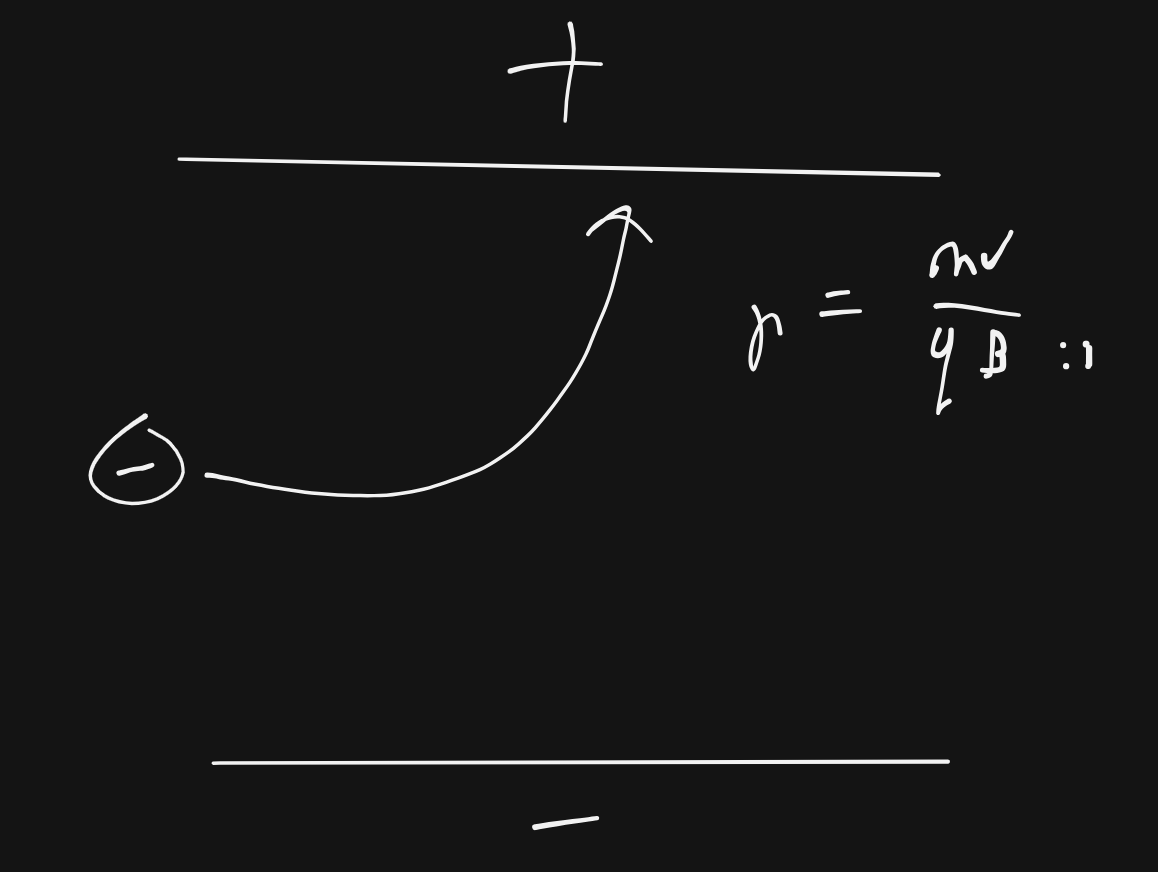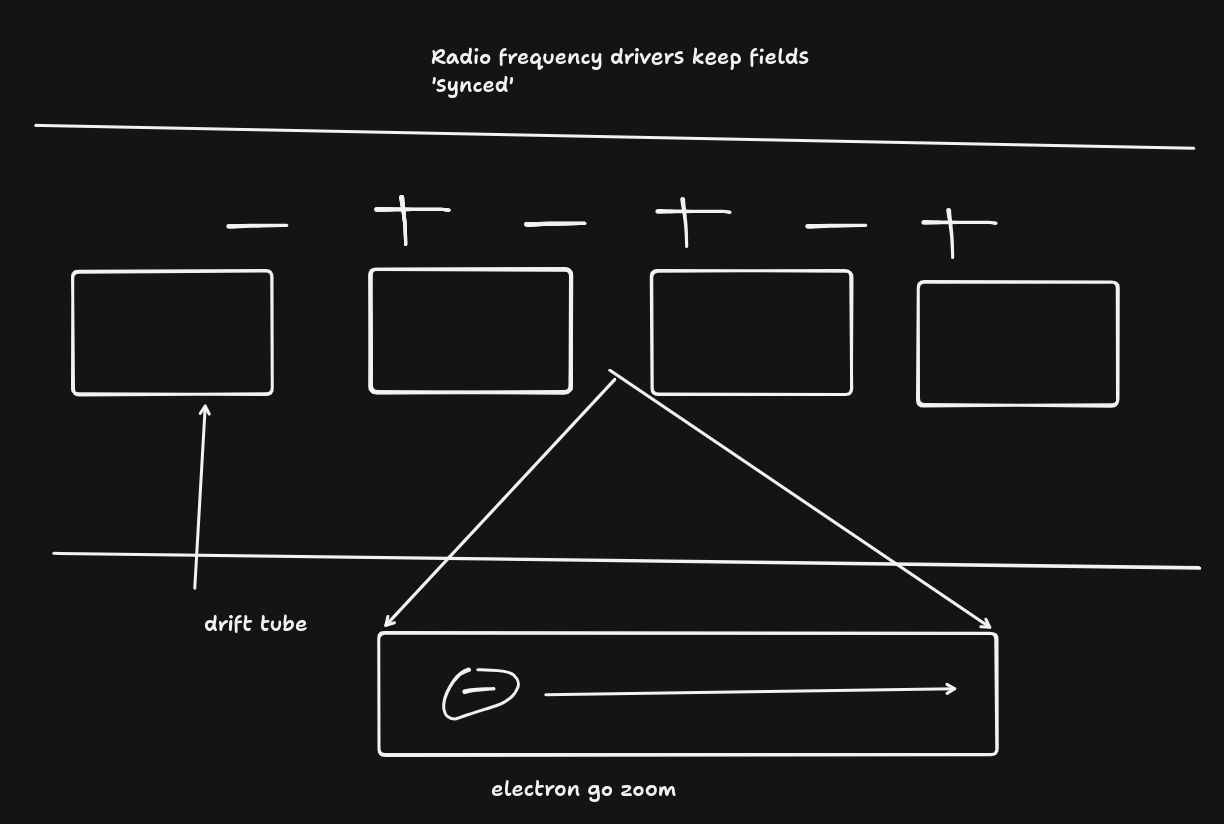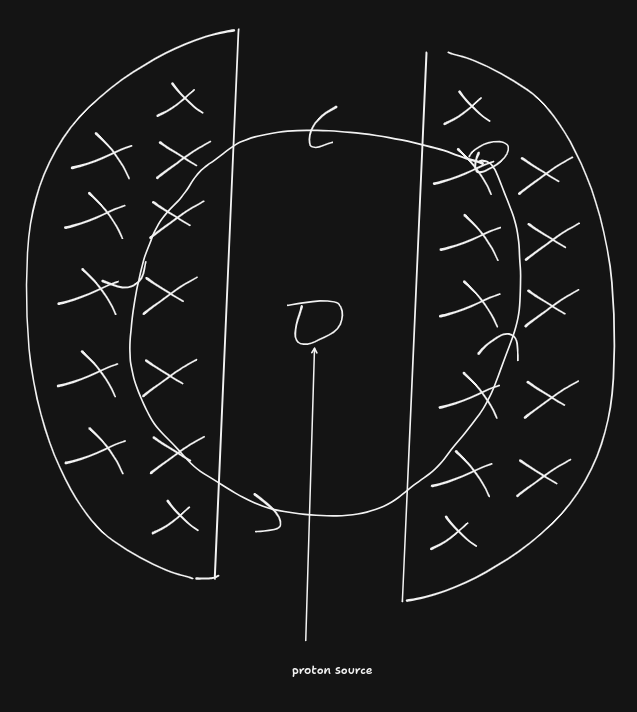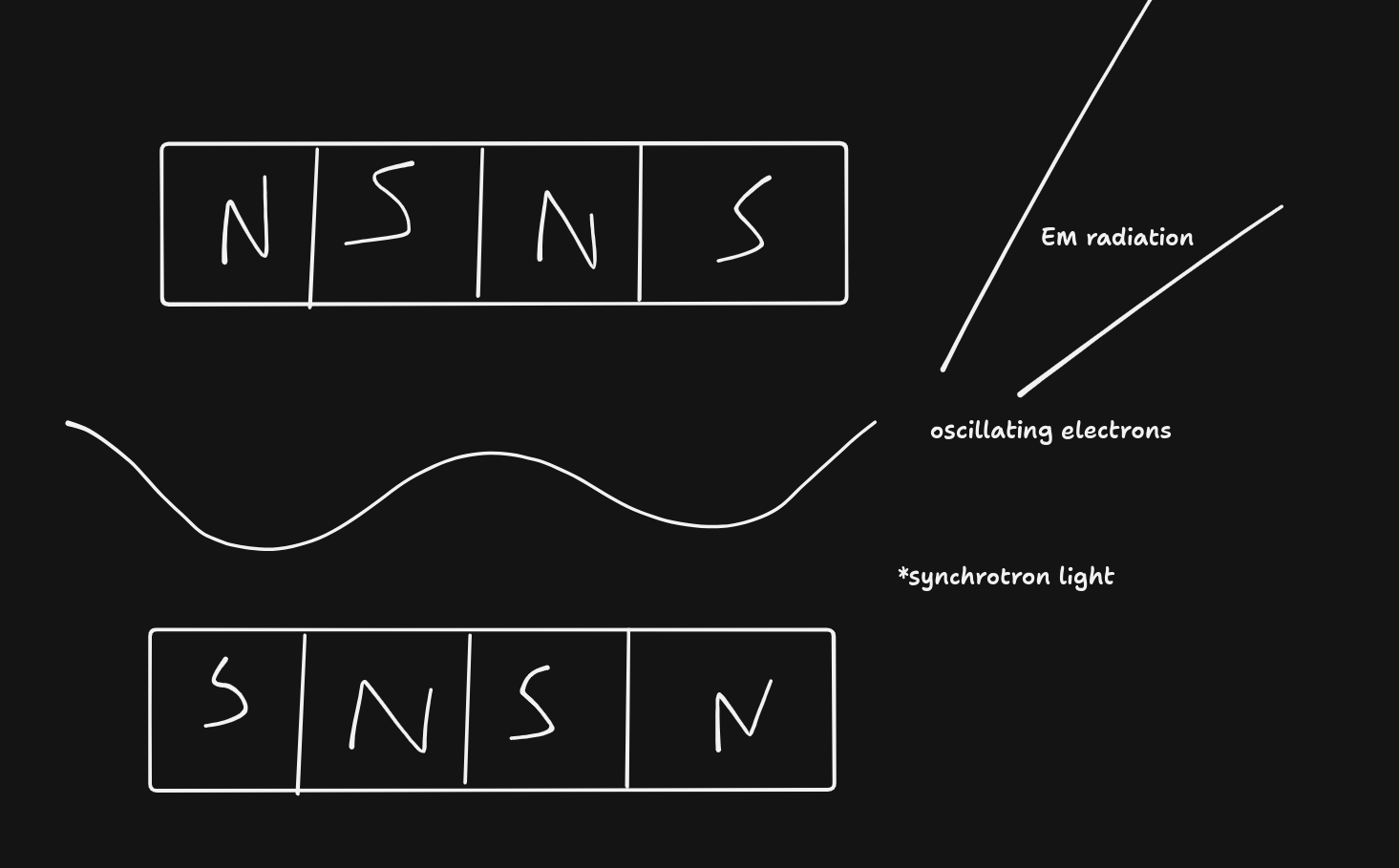
Hence, when we place a charged particle in an electric field, it is accelerated, and gains kinetic energy(work is done on it).
Note, this can be very fast. Consider having to use $Vq=mc^2\left(\frac{1}{\sqrt{ 1-\frac{v^2}{c^2} }}-1 \right)$ to accurately determine the kinetic energy of the particle.

Hence, we can also use electric fields to change the direction of particles. Note, this is a parabolic trajectory (woops, no $r=\frac{mv}{qB}$)
Remember, $F=qvB\sin \theta$

This time, the direction is circular.

Here, the magnetic force is upwards, the electric force is downwards. insert some math $v=\frac{E}{B}$


 Why heavy deflected less:
Why heavy deflected less:
So for heavier things, $m\uparrow$ $\implies$$r \uparrow$, hence it has a greater arc and appears to be deflected less :)

i.e. the frequency of a charged particle of fixed mass moving in circular motion through the cyclotron is constant!
If the frequency changed, then things would be quite annoying. :(
Note: The cyclotron reverses the field to create that centripetal acceleration towards the centre.
These things be going really fast. But with relativity, velocity and momentum change. This means that $f$ is no longer constant! Uh oh, things start to mess up. (Fail at 1% speed of light)

We can harness the electron's energy to produce electromagnetic radiation of various frequencies.
When electrons lose energy (or oscillate) they emit electromagnetic radiation.
